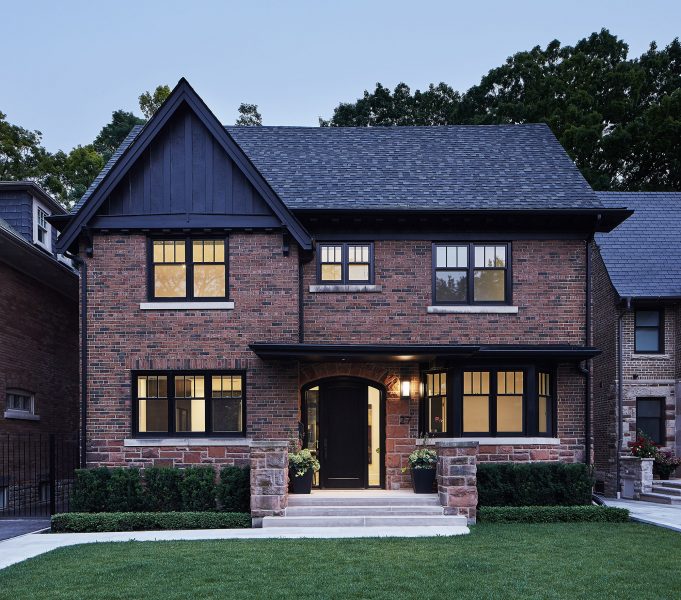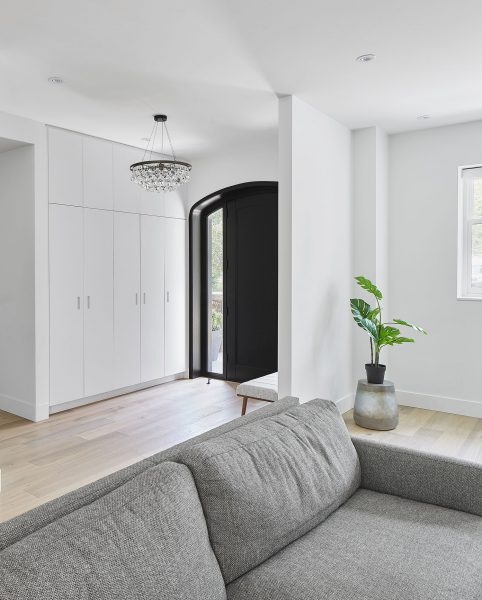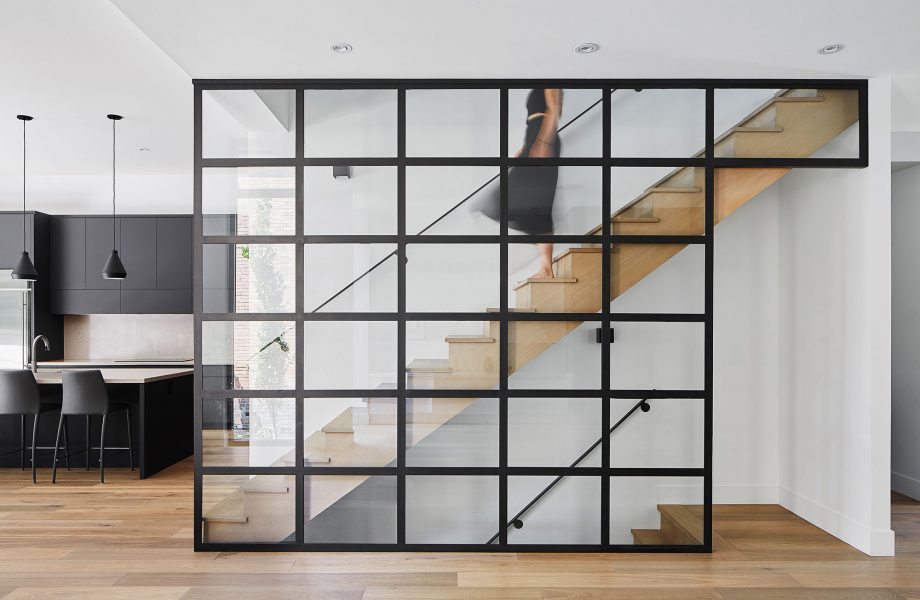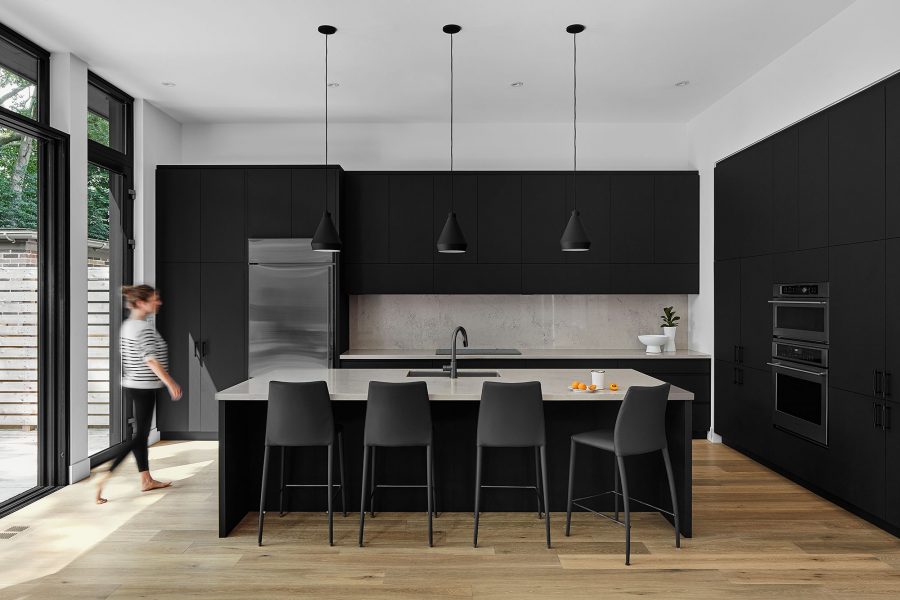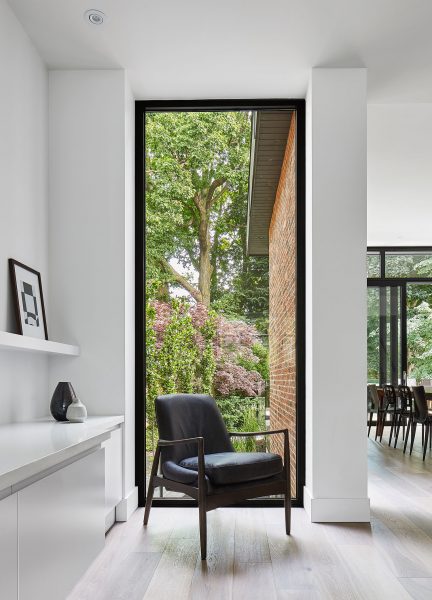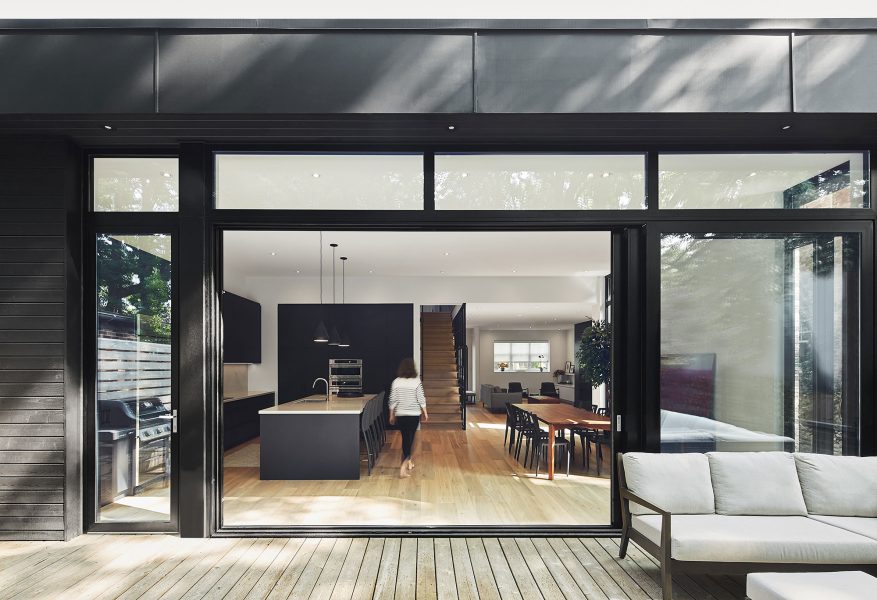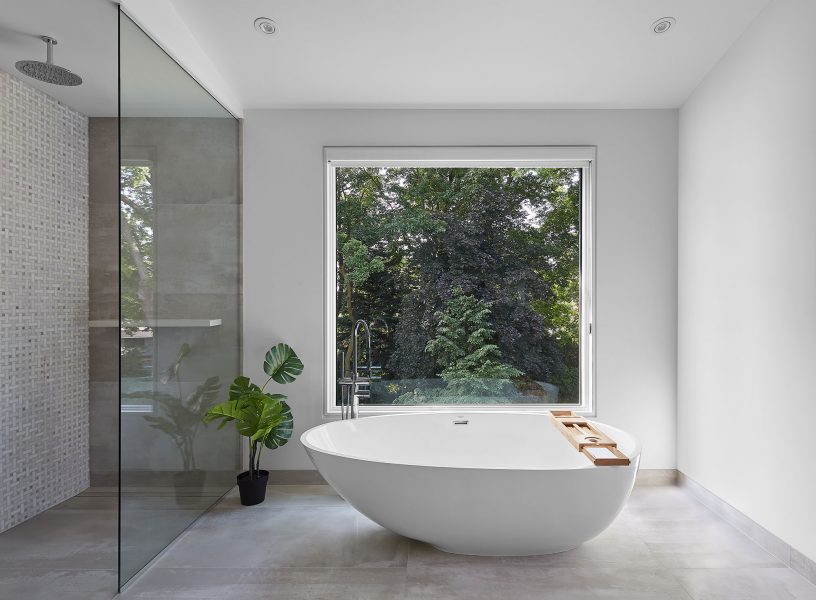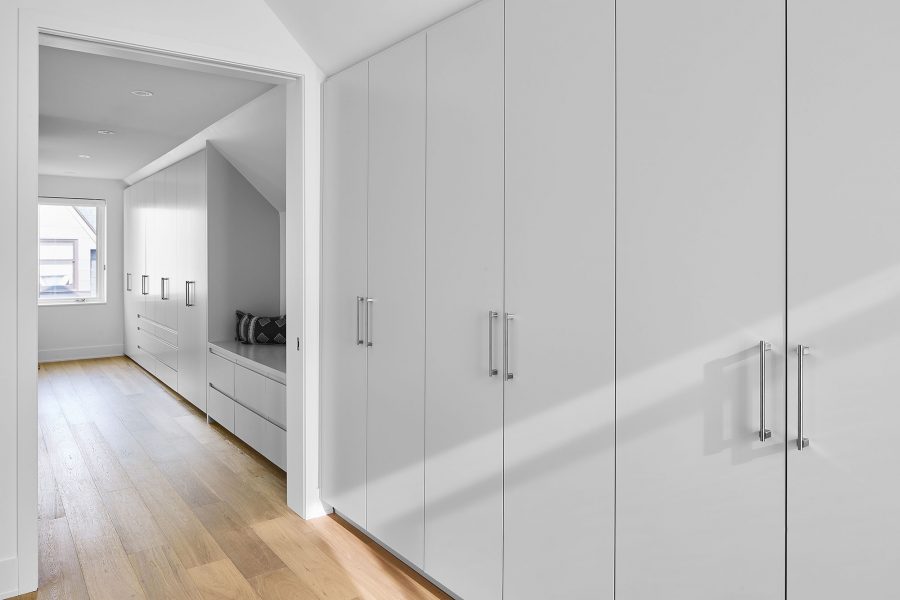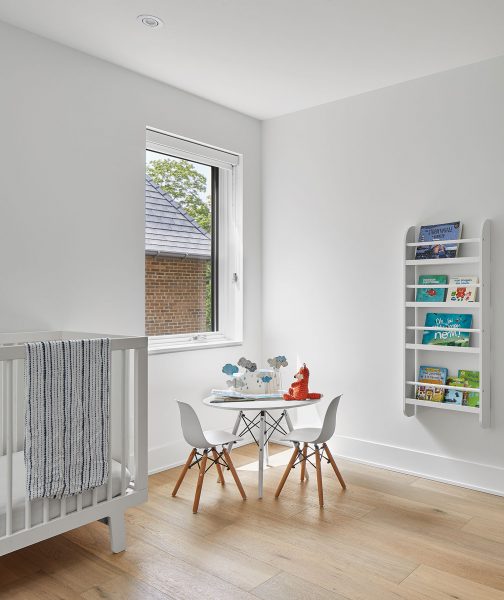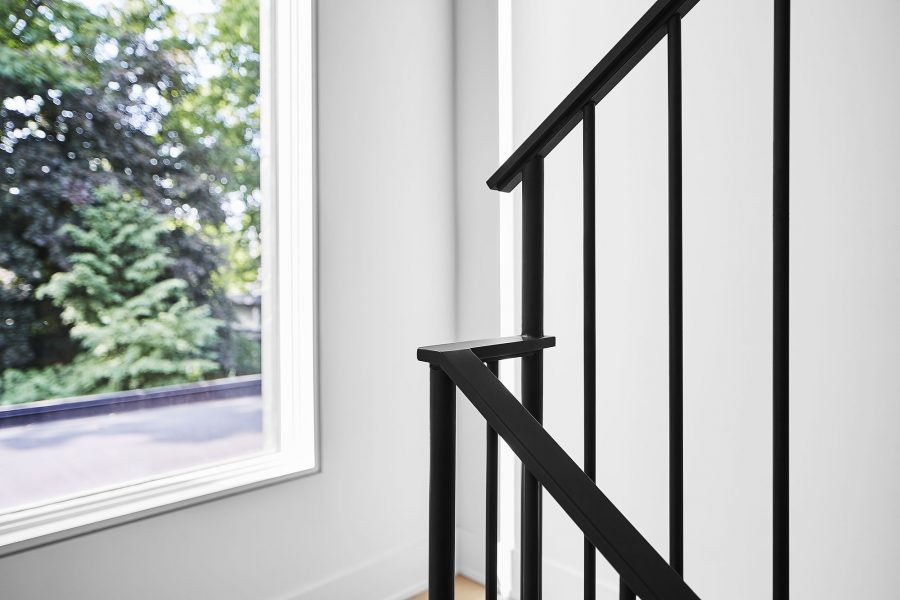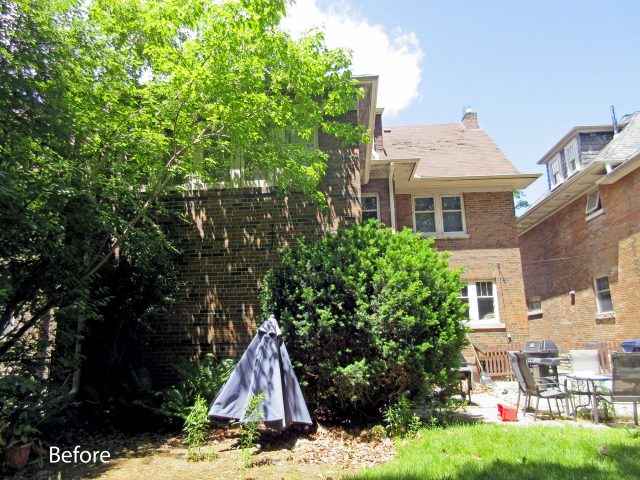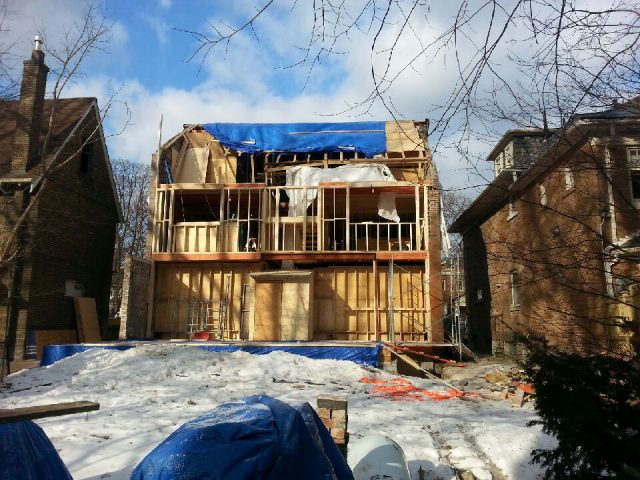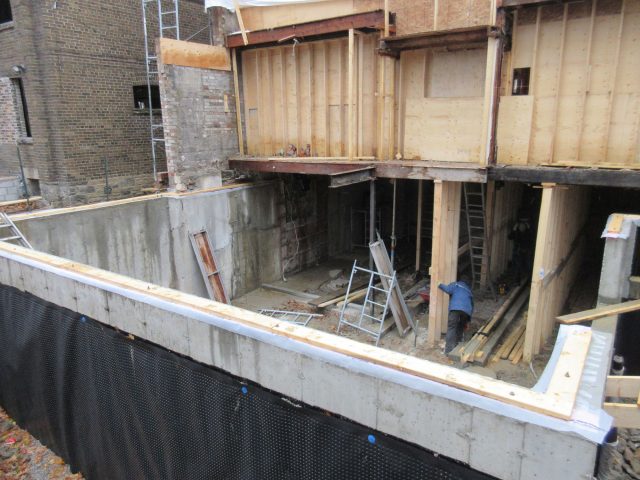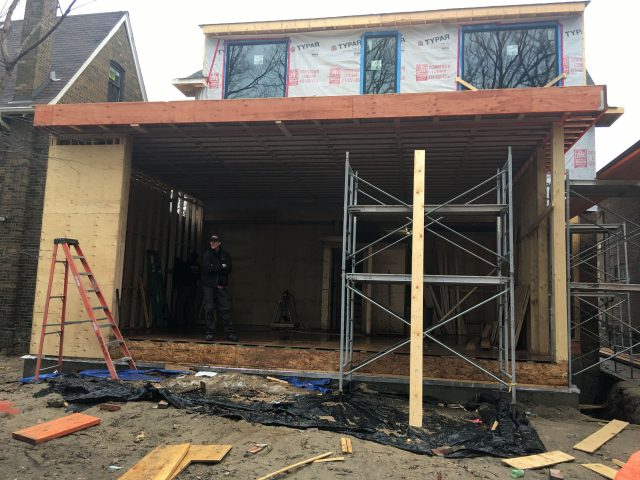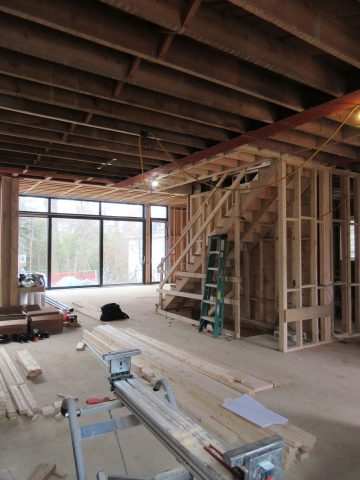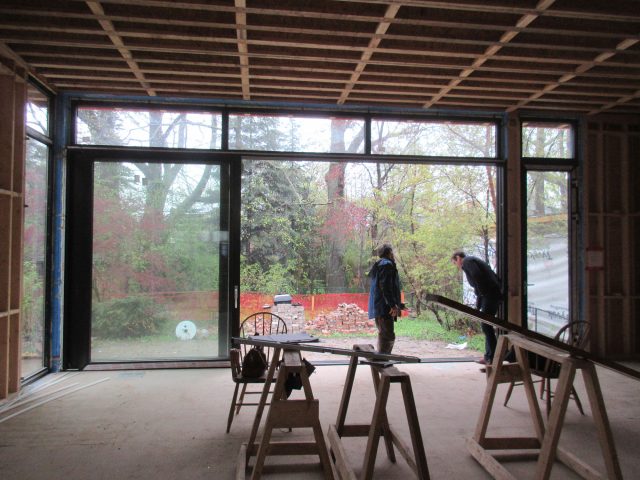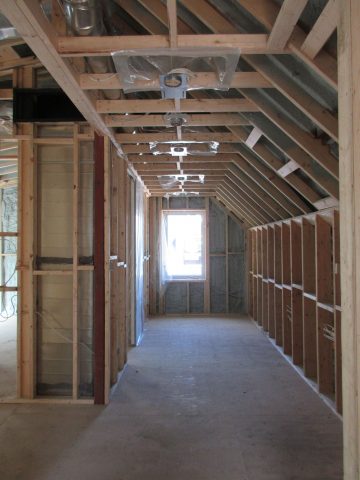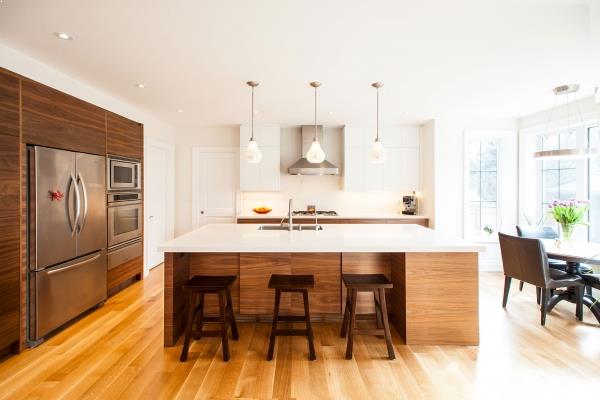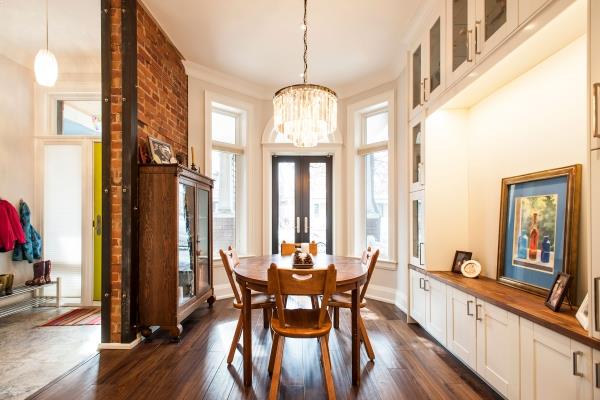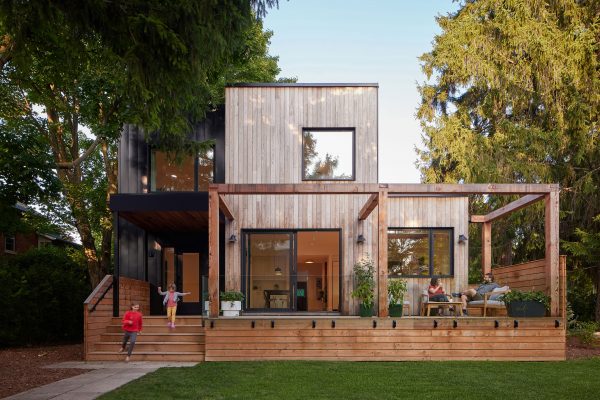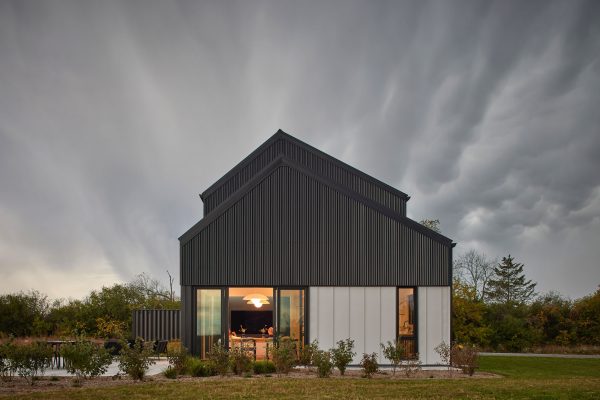This beautiful renovation of a 1920s Toronto home is in a heritage-zoned area of Toronto’s Rosedale neighbourhood. Behind the protected original façade lies a gorgeous and expansive renovation that stiches together inside and outside. Flow of spaces, soaring ceilings, modern interiors, and a heartfelt connection with the back garden are all hallmarks of this transformed heritage home.
Design
Our clients relocated from the UK to Toronto. They loved the London home they left behind, and wanted some of the same design reflected in their new Toronto home. Consequently, they brought in Greg Mathers of Ciarcelluti Mathers Architecture – who had designed their London home – as primary interior design consultant. Connection to the outdoors, high ceilings, and a similar modern aesthetic were some of the key inspirations from their former home.
Since the front face of the building was protected by Heritage, the north window openings could not be changed. Instead, there are upgraded, high-performance windows installed in the original openings. Inside, the main floor is opened up to accommodate an entry area, office, mud room, powder room, and a soaring open-concept living-kitchen-dining space that spills out to the back garden through a giant sliding glass wall system.
Modern, floor-to-ceiling windows in the living and dining rooms, and huge ceiling heights make this home bright, airy and current. The main floor ceilings are 9’-6” at the front of the house, and rise up to 11″-6″ in the rear dining-kitchen area. The entire main floor was lowered from the original level in order to achieve these dramatic ceiling heights. A feature fireplace was made with two large sheets of steel built locally to create a focal point in the living room.
Great attention was paid to detailing the rear sliding wall so the experience is continuous and seamless between inside and out. The outside deck was raised to be perfectly aligned with the inside floor, and the deck was framed so that the decking could run parallel with the inside floorboards. In order to create an “invisible” threshold, the whole threshold is sunken into the floor for a smooth transition. Special attention was paid to waterproofing this detail as well, which required carving into the joists and modifying the structure.
On the second floor, there are three bedrooms, two full washrooms, and a laundry room. The third floor is dedicated to the master suite, with a “walk-in closet” that occupies the entire width of the house. The bedroom and bathroom both have vaulted ceilings and lush garden views.
The basement was dug out to achieve 9’-0” ceilings, and houses a large playroom for the children, a guest bedroom and bathroom that could one day accommodate a live-in childcare provider, a home gym room, and a very large storage room that also houses all the mechanical equipment.
Construction
Built in the 1920s, the pre-existing house was divided into separate rooms, due to structural design limitations of the time, and to accommodate the way people lived back then. Our clients were very keen on having flowing open spaces with high ceilings, so the original house needed major changes. We did a complete gut of the house and redid all the internal structure, including lowering the main floor to increase the floor-to-ceiling height.
The lowering of the floor was an interesting part of the construction process, and influenced the design as well. Once the floor level was lowered, the top 12 inches of the original foundation wall became exposed, creating a bench effect that sticks out about eight inches all around the perimeter of the house. In order to hide it, creative cabinetry and built-in furniture had to be carefully designed. This was most evident in the living room and office where it was built into the media cabinetry and hidden under the desk.
The insulation on this project is closed-cell spray foam, as it is an effective insulation and air/vapour barrier for load-bearing masonry walls. The same insulation is applied in the roof in order to accommodate the cathedral ceilings of the third floor, and under the slab is standard EPS foam insulation. The new flat roof over the kitchen/dining space has been designed to allow a green roof to be installed in the future.
To bring this beautiful project to life, we worked with Ciarcelluti Mathers Architecture, Emily Hollis Interiors, Element Kitchens, Moses Structural Engineers, ReNü Engineering, and Revive Contracting.


